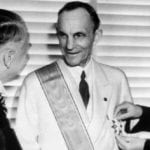 Technology
Technology  Technology
Technology  Our World
Our World 10 Ways Icelandic Culture Makes Other Countries Look Boring
 Misconceptions
Misconceptions 10 Common Misconceptions About the Victorian Era
 Mysteries
Mysteries 10 Strange Unexplained Mysteries of 2025
 Miscellaneous
Miscellaneous 10 of History’s Most Bell-Ringing Finishing Moves
 History
History 10 Great Escapes That Ended Right Back in Captivity
 Weird Stuff
Weird Stuff 10 Fascinating Things You Might Not Know About Spiders
 Food
Food 10 Everyday Foods You Didn’t Know Were Invented by the U.S. Military
 History
History 10 Odd Things Colonial Americans Kept at Home
 Weird Stuff
Weird Stuff 10 Superstitious Beliefs That Once Consumed Entire Cultures
 Technology
Technology 10 Scientific Breakthroughs of 2025 That’ll Change Everything
 Our World
Our World 10 Ways Icelandic Culture Makes Other Countries Look Boring
 Misconceptions
Misconceptions 10 Common Misconceptions About the Victorian Era
Who's Behind Listverse?

Jamie Frater
Head Editor
Jamie founded Listverse due to an insatiable desire to share fascinating, obscure, and bizarre facts. He has been a guest speaker on numerous national radio and television stations and is a five time published author.
More About Us Mysteries
Mysteries 10 Strange Unexplained Mysteries of 2025
 Miscellaneous
Miscellaneous 10 of History’s Most Bell-Ringing Finishing Moves
 History
History 10 Great Escapes That Ended Right Back in Captivity
 Weird Stuff
Weird Stuff 10 Fascinating Things You Might Not Know About Spiders
 Food
Food 10 Everyday Foods You Didn’t Know Were Invented by the U.S. Military
 History
History 10 Odd Things Colonial Americans Kept at Home
 Weird Stuff
Weird Stuff 10 Superstitious Beliefs That Once Consumed Entire Cultures
10 People Who Were Erased From History
Throughout time, man has attempted to keep an accurate historical record of the events that came before them. Originating in oral history, passed down through generations, and eventually recorded as written texts, these stories have been cherished for centuries as the only connection to a world that would be otherwise forgotten.
As is often the case, at times it became inconvenient for certain truths to be widely known, let alone published as an eternal record. Occasionally, certain events—and even people—were simply written out. Very rarely a complete success, only rumors and side notes revealed that there had been any attempt at a cover-up. As time progresses, we continue to uncover more and more historical figures who were whited out in an editorial revision of undesirable history.
10Geta Severan
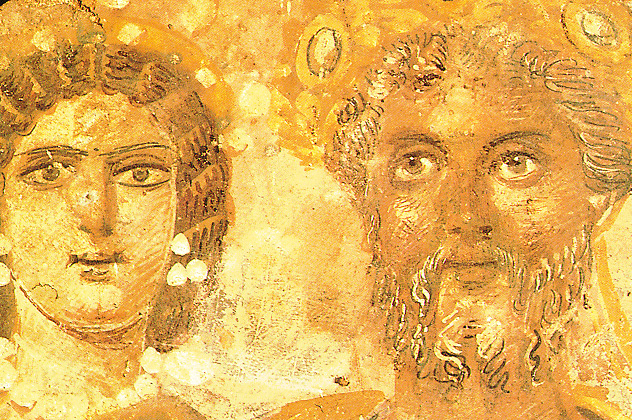
The term Damnatio Memoriae was coined by the Romans as literally the damning of a memory. In an age when legacy was held in higher regard than even life itself, it was the ultimate insult to strike an entire lifetime’s worth of achievements from the books as if they had never existed. The Roman penalty was considered one reserved for the worst offenders, such as religious heretics, political offenders, or disgraced members of affluent families. Such was the case of Geta Severan and his family.
Geta attempted to divide his father’s kingdom with his bitter rival and brother, Caracalla. Thwarted by their mother, Geta was eventually murdered by Caracalla, who then had Geta’s wife, Plautilla, executed. After their deaths, all inscriptions with either of the two’s names, every statue and reference to Geta or Plautilla, were destroyed. Ironically, due to his fame, the history-stricken Geta was still afforded a public funeral.
9Nikolai Yezhov

Being the enemy of Joseph Stalin was dangerous business. For the ruthless and feared Nikolai Yezhov, it contained a pointed irony that as minister of Stalin’s most vicious enforcement unit, he himself ended up at the spear-end of the communist leader’s anger. Nikolai was not only ousted, murdered, and disgraced along with his family, he was then methodically erased from photographs where he had previously appeared with his commander.
Overnight, Yezhov went from one of the highest officers in a powerful new world order to a shadow in a poorly lit photo and a name no one dared to utter. And Yezhov was not the only person to receive the World War II–era Photoshop treatment—it was commonplace in the communist government to deny failures and make inconvenient truths, even people, disappear. The practice has continued in current communist-led governments where rebellious leaders are removed by force and deleted from official documents.
8The Erased Of Slovenia

Being stricken from the history books is not an event reserved only for individuals. Prior to Slovenia declaring its independence in 1991 from Yugoslavia, many immigrants had made their way to the new country. A lengthy application process was established in which ethnic Slovenes were not required to request citizenship. In 1992, faced with a huge logistics problem, the Slovenian government decided to do something about their migration woes: They deleted over 25,000 people from the public registrar of official citizenship.
With the purged records went all social, economic, political, and civil rights that the people had once possessed. Literally overnight, the former residents found themselves illegal immigrants in their own homes. The battle to restore citizenship and rights has lasted over 20 years, with court appeals ruling in favor of the erased. Though many chose to immigrate elsewhere, others remained, pretending to be refugees or claiming asylum even though they had been equal citizens only days before. The European Court for Human Rights has ruled in favor of the activist group seeking to restore the lost rights, suggesting more than double the amount the Slovene government has offered in restitution.
7Jang Song Thaek

Few dictators in recent history have been painted in the media as bigger lunatics than the bloodline of Kim Jong-n and his predecessors. Despite the grandstanding and often belligerent statements made by the current powers that be, some truly upsetting policies have emerged from the secretive, totalitarian government. One such policy is of cold-blooded murder and defamation of anyone—including family—who opposes the official policy of the state.
When his own uncle brought offense to current dictator Kim Jong-un, he had the man arrested. He then had him decreed a traitor and murdered. But it didn’t stop there—thoroughly infuriated, Kim had the man systematically removed from all media in the country that was within the government’s power to manipulate. The man who had enjoyed an inside position for years now officially never existed in the country of North Korea.
6Queen Hatshepsut
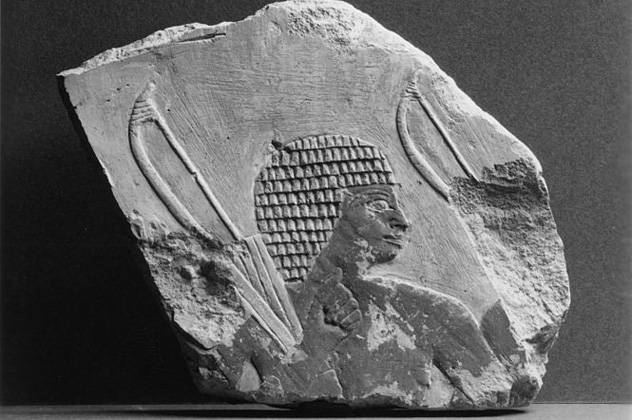
The Egyptians may actually have invented the practice of historical revision; no one knows for sure. They did certainly bring it into the public light as a common and aggressively pursued practice. Each new pharaoh sought to prove himself the superior of his predecessor, often at the cost of demolishing all memory of the former king. This practice makes it very difficult to determine chronological events in Egyptian chronology because the names of conquered rulers were literally chiseled out of their place in history. If a king was not succeeded by his own heir—at times even if he was—the entire bloodline, all attending priests, and even household pets were put to death. This served to end the traditions that the people had followed before.
Queen Hatshepsut was a peaceful queen who led a prosperous Egypt for 20 years after the death of her husband Thutmose I. Thutmose III, the eventual heir, was too young to take the throne, and Hatshepsut took regency over him before assuming the title of pharaoh until her death. Whether because of a personal grudge or as a political move, Thutmose had inscriptions of his aunt removed, her statues walled up or destroyed, and her name erased from history. One of the obelisks she erected does still stand in Egypt today.
5Maximian
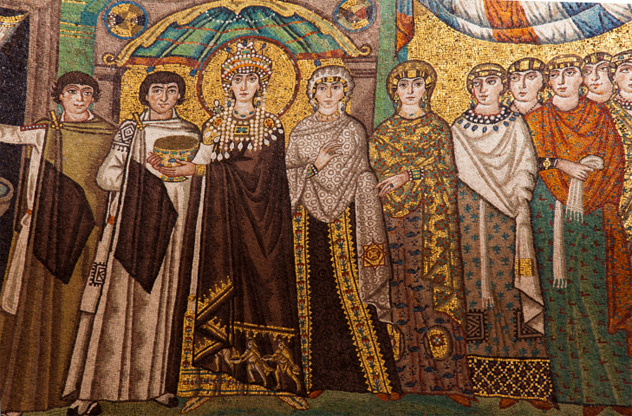
It was a case of the classic power struggle between great forces seeking to be sole ruler of the most powerful nation in the world. At the time, Constantine and the rebellious Maximian shared the ruling title of Caesar, arguing over who had the right to the title of Augustus (supreme commander). It was a complicated affair and the shifting of power went back and forth for years.
Maximian abdicated his position twice under pressure but continually reclaimed his right as Augustus over Constantine. Known as anti-Christian, Maximian had temples burned and Christians persecuted throughout the province. Extremely unpopular in the reformist regime that would become Constantine’s empire, he was imprisoned and eventually committed suicide. As punishment for his crimes and to wipe the Roman slate clean to make way for Christian policy, Maximian was erased from history—his portraits were removed and coins bearing his image were destroyed.
4Elizabeth O’Farrell

The story of Elizabeth O’Farrell is the story of hundreds of women in Ireland during the revolution of 1916. As a nurse and strict Republican, O’Farrell was a huge supporter of the movement, even delivering messages across borders despite the inherent risks. She was an outspoken advocate during a time when the country of Ireland viewed women as keepers of the home and nothing more. Ultimately, when the white flag was waved, it was O’Farrell who was chosen to stand next to opposition leader Padraig Pearse at the surrender. A great moment in Irish history, a commemorative picture was taken.
The problem? Elizabeth O’Farrell wasn’t visible. Only her feet appeared behind the rebel leader, and later versions of the image showed an airbrushed scene with no O’Farrell whatsoever. She remained an obscure footnote for nearly 100 years. The question is whether or not the deletion was intentional. In the intervening years, the Irish government has even issued an apology for the downplaying of female freedom fighters and has named a bridge after another protest participant—Rosie Hackett. According to witnesses who claim that they spoke with O’Farrell, she intentionally stepped aside to not give the oppressors the satisfaction of seeing her face. As to why the editors later chose to remove what was left of her image, no one seems to know for sure.
3Akhenaten
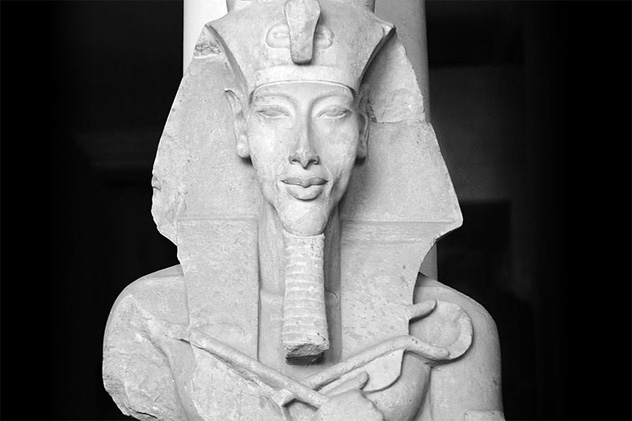
Akhenaten has at times been referred to as the inspiration for the Christian character of Moses. His influence on the Egyptian people was unprecedented . . . and, ultimately, short lived. Credited with introducing monotheism to the Egyptian people, Akhenaten eliminated the polytheistic, popular pantheon of gods traditionally enjoyed by the culture. Radical and revolutionary, he did not make many friends with his overhaul of religion and politics.
Shortly after taking the throne, Akhenaten ordered all mention of the previous god (said to have fathered the previous pharaoh) to be removed from the mortuary chambers of his father. With his wife Nefertiti, he ruled the land and established a new capital. For all his efforts, his decrees were later reversed by none other than his son and the most famous of all pharaohs: Tutankhamun. Shortly after Akhenaten’s death, the scribes entered his father’s tomb and re-carved all of the original god’s names. While they were at it, all mentions of Akhenaten were systematically eliminated.
2Altani Khan

The name of Genghis Khan conjures images of terror and war that are unparalleled in history. The name “Altani Khan,” on the other hand, falls flat to most modern ears. In fact, during the time of Genghis and his reign, he had three daughters who were not only feared and respected, they were praised by their father and honored with powerful positions in the military. It was their influence that rescued his kingdom from ruin after his death, and it was solely due to an unknown censor that their names were lost to history in the first place.
The reason every schoolchild knows Genghis Khan but no movie was ever made starring a cartoon version of Altani or her sisters is because the record of their reign, The Secret History of the Mongols, was mysteriously edited to exclude the words of their father that would bestow their rightful honor in his new kingdom. Genghis was reported to have said that honor should be given to the women, whom he had great respect for. Unfortunately, the kingdom soon fell and the daughters were forced to fight off a hostile rebellion that was eager to reclaim the fallen king’s territory. As the passage of time covered the true story, the sisters were left off the official record.
1Jack Parsons

Jack Parsons was one of the most influential men of his time. Inventor, scientist, and socialite, he was responsible for the beginning of one of America’s most important programs. Jack was a founding member of the JBL, an invaluable source of technology for the military during World War II which eventually provided a wealth of knowledge to an up-and-coming NASA.
He was also present during the early creation of Scientology. As friends with L. Ron Hubbard, who at times borrowed Parson’s wife and vice versa, Jack was making waves in the 1940s that didn’t sit well with the educated elite—or the Federal government. He often referred to himself as the Antichrist and attempted to summon creatures from the underworld. Systematically removed from the textbooks and virtually all references that aren’t footnotes, Jack was expelled from society and buried in the annals of history until a biography entitled Sex and Rockets brought the memory of this colorful character back to life.
Twitter: @JSGestalt


